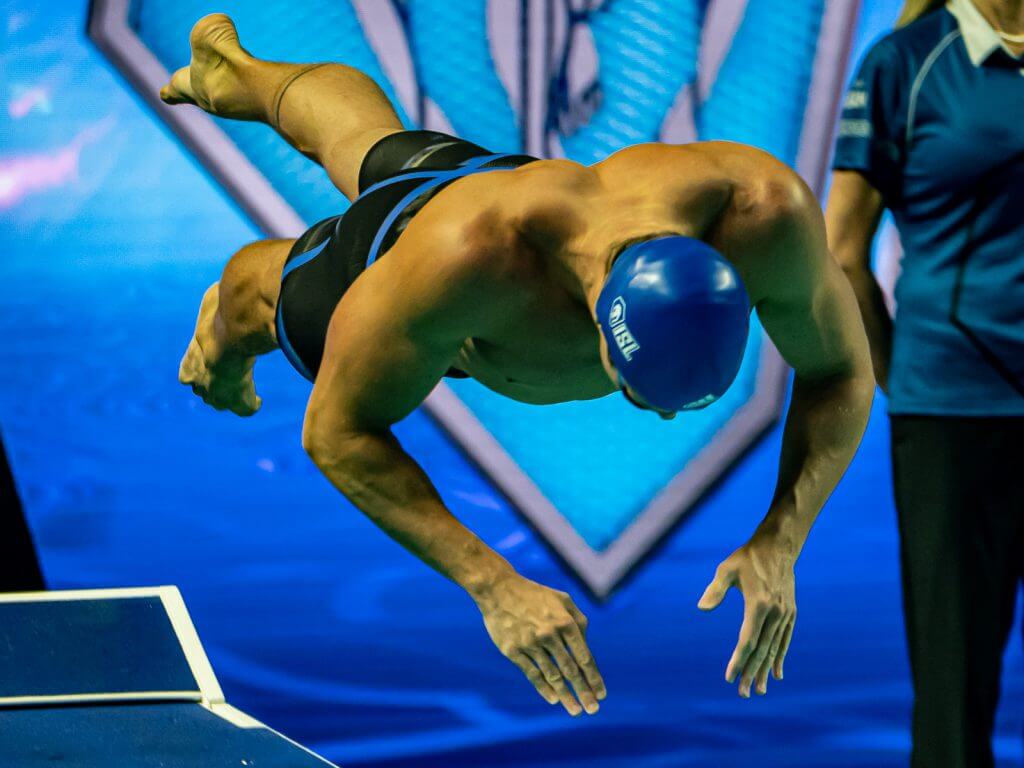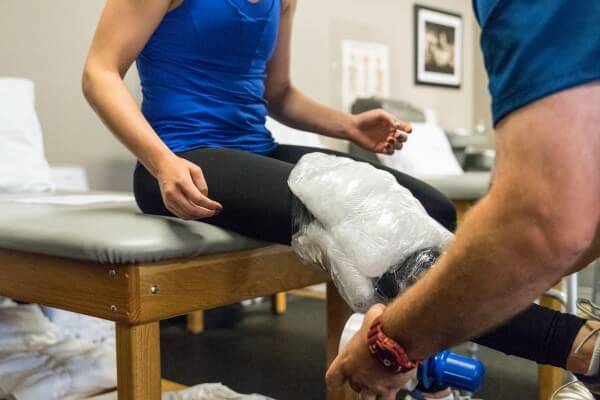A Dive Into the World of Swimmers: Going Beneath the Surface

A Dive Into the World of Swimmers: Going Beneath the Surface
By Daniel Zeng, Swimming World Intern
Swimmers have been known to think their sport is tougher than the rest. We are expected to perform at our best, all while barely breathing. Although it is true that swimming shares attributes with other sports, our sport seems to elevate them further. Here is a deep dive into the intricate life of a swimmer.
Extensive Warmup
Customary prior to any form of exercise, warming the muscles up is beneficial in preparing the body for a workout. Swimmers endure a long warmup compared to most sports. Two thousand yards or meters of endurance, speed, technique, and all four strokes, moving in something heavier than air? No problem. While warming up, we physically – plus mentally – ready our entire self for the dreadful aches of the main set, and cannot exert too much energy too early in the practice.
Ghastly Smell
If the whiff of sweat makes you cringe, imagine combining it with fumes of chlorine, urine, mucus, vomit, makeup, nasty bacteria, tears, in addition to various oils secreted by the body. Sweat sounds like nothing now, does it? We have to marinate in this nastiness for hours a day and constantly emanate the “signature” stench. Good thing we are accustomed to this foul odor, as it has become our perfume.
Countless Injuries
Looking back at the sports I have played, I have received more injuries in swimming than in any other sport, likely due to my constantly dry, easily-bruisable skin. Countless times my hands slam into the lane line, particularly during backstroke. Smacked in the face by a flyer. Kicked by a breaststroker’s swift frog kick. Scratches on my feet from slipping off the block. Slamming my hand too forcefully into the wall and crushing my wrist, or skimming the wall a tiny bit on the turn with any part of my body. Gliding into the bottom and scratching my chin. My wrists painfully stiffening from constant flexing. Of course, swimmers are notorious for complaining about shoulder pain, since we are quite literally carrying (moving) a heavy weight on them. Non-contact sport says who!
Whole-Body Soreness

Photo Courtesy: Physio Pro
Swimming truly is the ultimate full-body workout. There are sports that mainly utilize one muscle group, such as legs in cycling, or arms in rowing. Then there are sports that exercise the whole body, like American football and basketball. Swimming advances the two types to a whole other level. Every little bit of muscle, bone, and joint is restlessly engaged. Your armpits. Wrists. Fingers. Ankles. Backs of your knees. Parts of the body you never knew existed. Arms regularly feeling flu shotted. Twinges of discomfort in the lower body pushing off the wall. Moreover, water’s resistance and density are greater than air, especially with all the foreign fluids residing within. Moving in it demands more effort than air. Not only does swimming promote cardiovascular endurance by minimal breathing, the muscular strength and endurance required to maneuver the body forward at high speeds through the water, alongside superb flexibility while still keeping a tight streamline, exemplify one of the world’s most draining sports.
Four Different Strokes
While other sports have different positions with unique skills, such as the third baseman in baseball, and quarterback in football, swimming has four separate strokes that each require varying skill sets, along with certain muscle groups. Apart from freestyle, which is quite simply a power-driven stroke, the other three strokes are each swum in specific ways. Butterfliers mainly employ their upper bodies. Backstroke is very much a rotation-focused movement, swum flipped over on the back. Breaststroke has an unnatural, frog-like kick to it. The individual medley events combine all four into one race, allowing swimmers to swim each stroke, capitalizing on their best stroke.
Two Formats
Short course. Long course. These two phrases have very distinct meanings. Short course swimming, a length of the pool being 25 yards or meters, emphasizes turns and underwaters due to the short distance. Long course swimming, or 50 meters being the length of the pool, is keener on the actual swimming itself.
Incredibly Mentally Involved
Not only is swimming incredibly physically demanding, but the sport also pushes you beyond your mental limits. Finding the grit to complete a super tough main set is a brain workout in itself. Unique pacing of varying race lengths. Sprint versus distance stroke technique, flat as opposed to loping respectively. Diligently attempting to maintain a high but NOT too high body position within the water. If your hips or any one part of the body is not tight, everything falls apart. Swimming is like a constant puzzle, with no right answer.
Time Commitment

Photo Courtesy: Pexels
In addition to the hard, focused training in the water, we are also active out of the pool, dedicated 24/7. If we are not busy maintaining our fitness through dryland exercises, we are occupied with all our life’s obligations. School. Family time. Chores. Downtime. Social Life. Heck, our social life is barely there at all, where our teammates come in. A number of us practice two times a day year-round, with a mini-break sometime in August. But if you happen to miss just one practice, you will be subjected to at least twice the number of practices missed, trying to regain a feel for the water.
Individual OR Team? Both?
No timeouts can be called during swim meets, unless for a medical or another justified purpose, while other sports can call mid-game timeouts. We cannot simply decide that we are suffering too much, or something isn’t going right; we have to persevere past our temporary pain. During practice, you are mainly swimming for yourself, refining your stroke to produce fast times at competitions. Teammates are extremely crucial to your performance. Someone to pace off of to build your racer capabilities. Someone touching your feet prompting you to go faster. Someone to guide you through bad days. At meets, your teammates scream hysterically at the walls, cheering you on to hopefully a best time, particularly when races are down to the wire. Relays at meets are always super upbeat. Four individuals coming together, having trained daily with one another, with a sole goal: win. Each leg does their job, whether leading off, catching the leader, or anchoring to try breaking a record. Relays are the pinnacle of any meet, notably at bigger competitions like the Olympics or World Championships, where the top swimmers in the world are racing. Bonds with swim teammates are surely one of the deepest in athletics. These are the people you train seemingly forever with, make the same sacrifices as, etc. We are all in this together to better ourselves and support our team.
Pure Humor
To lighten the mood a bit, let’s look at the comical side of swimming. We wear minimal clothing, especially the shirtless guys who often only wear a tiny brief. We somehow manage to cope with a few seconds rest in between intervals, versus a few minutes. Additionally, our grocery bills are astoundingly high, not surprising for people who daydream about their next meal and always found eating.
Now, this is not to say other sports don’t experience any of these same effects, as I am sure many other athletes experience the same level of involvement that swimmers must show. This is saying that we still swim regardless of all the seemingly negative things it brings. We all cherish the experience of self-improvement, friends, meets, travel, and satisfaction. There are still numerous more aspects I can think of and definitely more that I cannot. Swimming heavily based on numbers. Timing exceptionally crucial to a perfect stroke and often the difference between first and second place. The importance of range of motion. Our sport is notably complex and these points challenge the little respect it sometimes gets from the outside.
All commentaries are the opinion of the author and do not necessarily reflect the views of Swimming World Magazine nor its staff.



